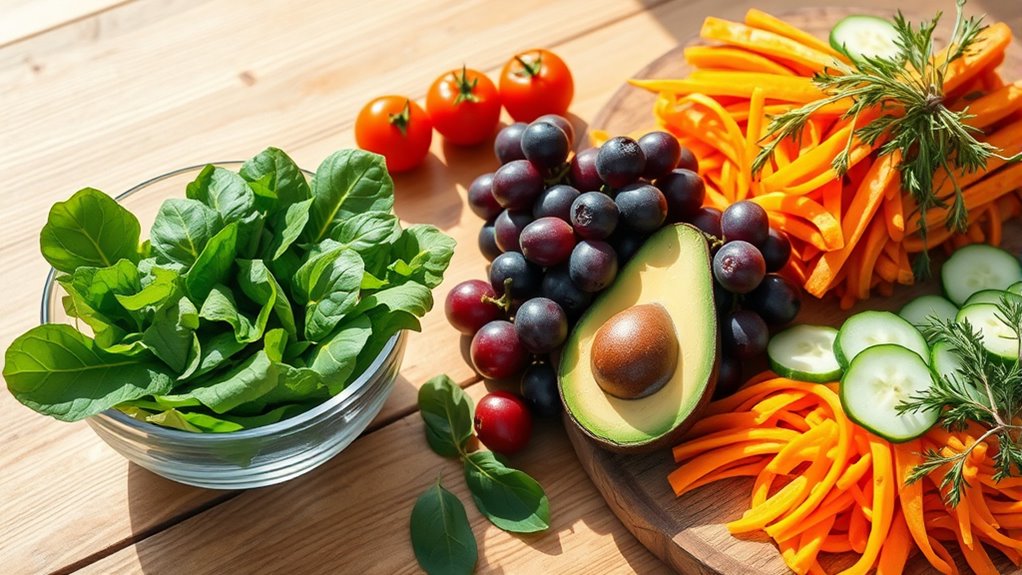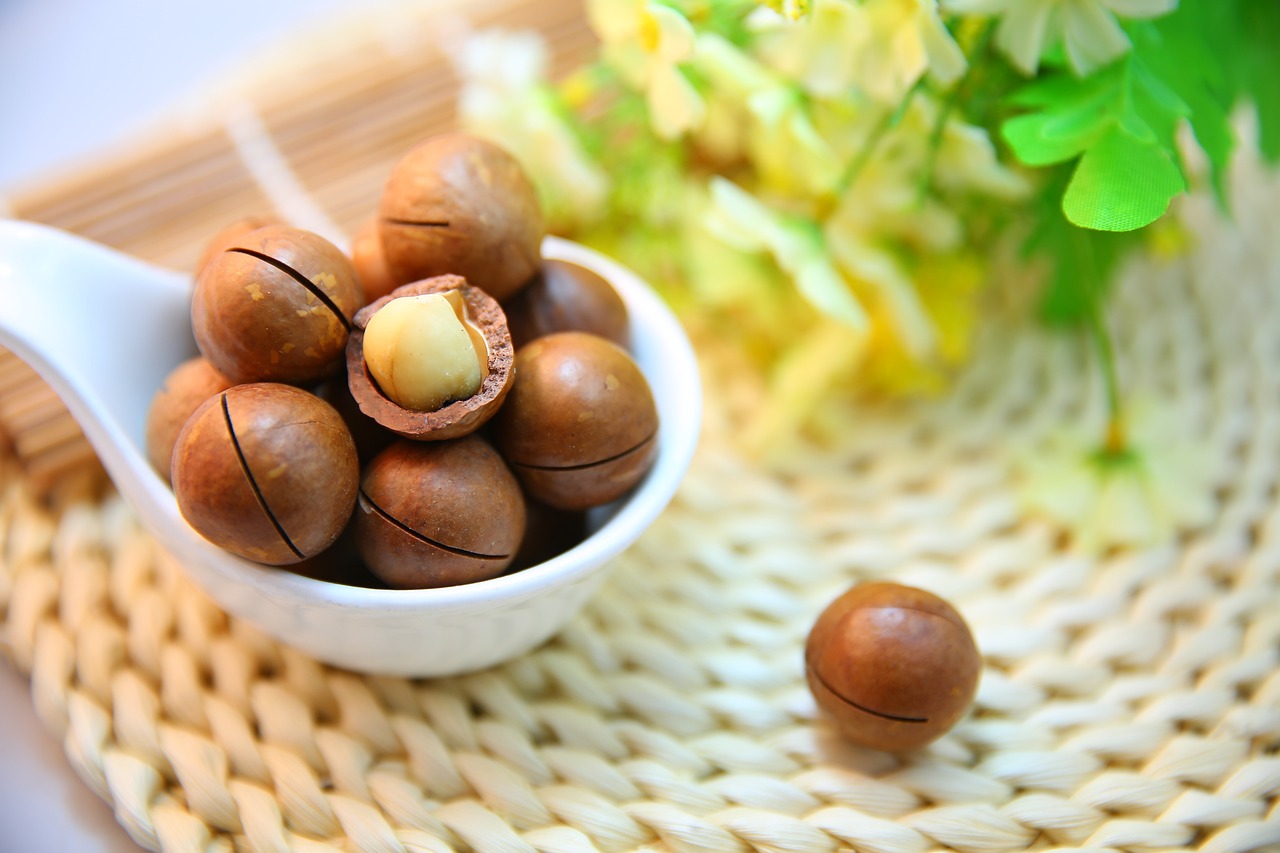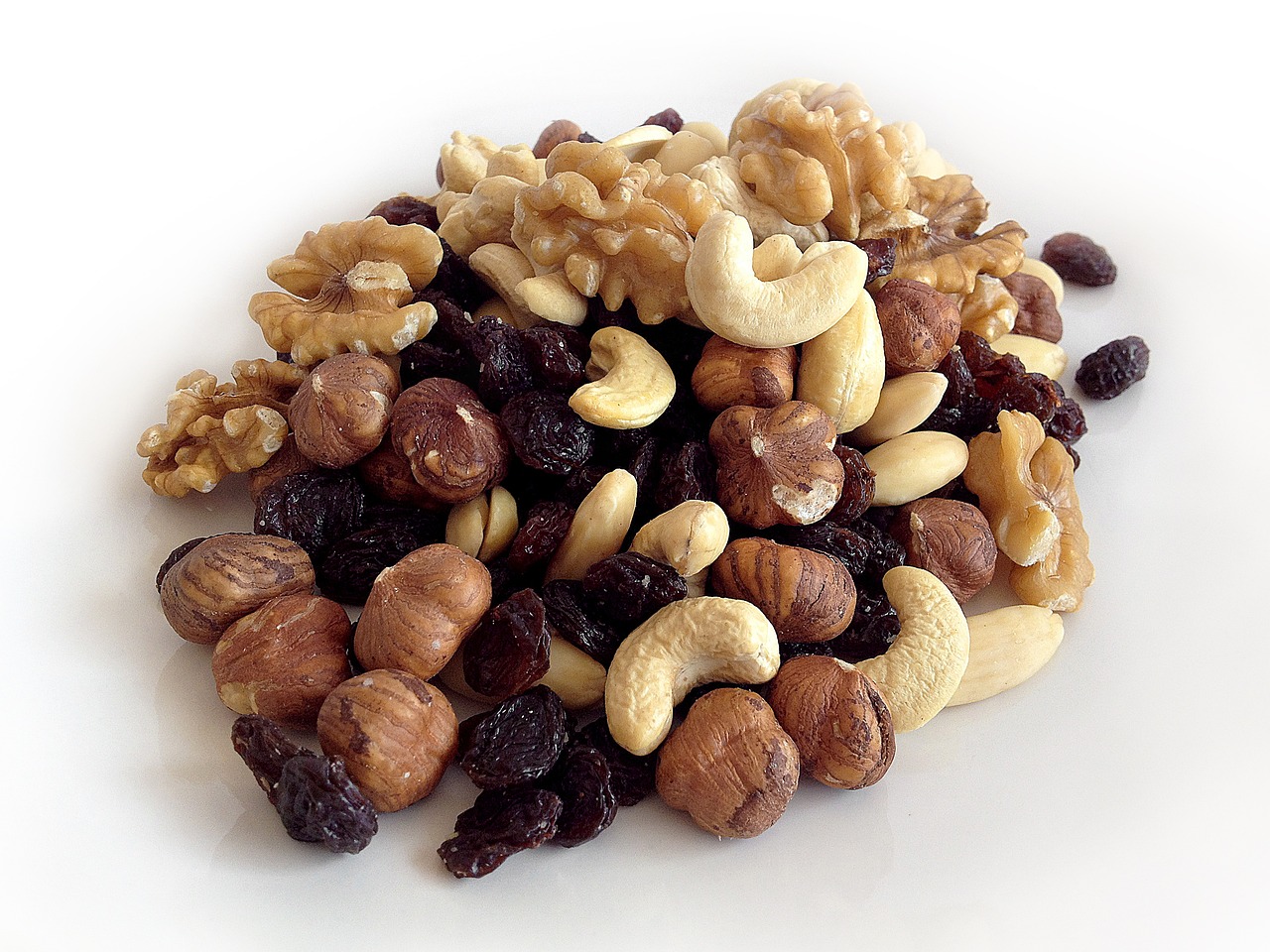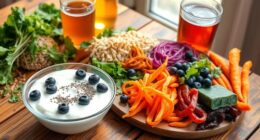If you’re starting a raw vegan diet, focus on eating uncooked, plant-based foods like fruits, vegetables, nuts, and seeds to maximize nutrients and enzymes. Prepare your meals in advance by chopping, soaking, or blending ingredients to save time and keep things simple. Use tools like a high-speed blender, spiralizer, and dehydrator to create variety and new textures. Keep it fresh and organized, and you’ll enjoy a healthy, vibrant lifestyle—there’s so much more to discover beyond the basics.
Key Takeaways
- Focus on consuming uncooked, plant-based foods like fruits, vegetables, nuts, seeds, and sprouted grains to maximize nutrient preservation.
- Incorporate meal prep techniques such as chopping, soaking, and blending to save time and ensure freshness.
- Utilize essential tools like knives, spiralizers, blenders, and dehydrators to create diverse, appealing raw dishes.
- Plan meals ahead by batching preparations of salads, dressings, and snacks to maintain consistency and variety.
- Emphasize the benefits of proper preparation and tools to make adopting a raw vegan lifestyle enjoyable and sustainable.

A raw vegan diet focuses on eating only uncooked, plant-based foods to preserve their natural enzymes and nutrients. If you’re just starting out, it’s vital to understand how to make your meals both nutritious and enjoyable. One of the first steps is learning about meal prep techniques. Since raw vegan foods are often prepared fresh, planning your meals ahead saves time and helps guarantee you stick to your diet. Meal prep involves chopping, soaking, and blending ingredients in advance. This way, you can assemble salads, wraps, or smoothies quickly during busy days, reducing the temptation to reach for processed foods or cooked options. Proper meal prep also helps you manage portion sizes and balance your intake of fruits, vegetables, nuts, and seeds. Additionally, paying attention to expiration of ingredients ensures your food remains safe and fresh, preventing waste and supporting your health.
Equally important is having the right kitchen tools. A good quality chef’s knife will make chopping fruits and vegetables safer and more efficient. A vegetable spiralizer allows you to turn zucchini or carrots into noodles, adding variety to your dishes. A high-speed blender is vital for smoothies, sauces, and nut-based cheeses, while a food processor can help you create raw dips, spreads, and energy balls. Investing in a dehydrator can expand your options, enabling you to make raw crackers, veggie chips, and fruit leathers. These tools make raw vegan cooking more accessible and fun, helping you experiment with textures and flavors that keep your diet exciting.
When it comes to meal prep, focus on simplicity. Gather fresh, organic produce and prepare ingredients in bulk. For example, soaking nuts and seeds overnight not only makes them easier to digest but also speeds up your prep time. Pre-washing and chopping your vegetables let you assemble salads and wraps quickly. You might prepare large batches of blended soups or dressings to use throughout the week. Keep raw snacks like trail mix or energy bites handy, so you always have something nutritious on hand. As you become more comfortable, you’ll find your own routines that fit your schedule and taste preferences.
Using the right kitchen tools and adopting effective meal prep habits can make your raw vegan journey smoother and more enjoyable. It helps you stay organized, reduces prep time, and guarantees you’re consuming a variety of nutrient-dense foods. Remember, the key is to keep things simple and to experiment with different raw recipes. Over time, you’ll develop your own set of favorite tools and routines that support your health goals. With dedication and the right approach, a raw vegan diet can be a delicious, vibrant, and sustainable way to nourish your body.
Frequently Asked Questions
Can I Get Enough Protein on a Raw Vegan Diet?
Yes, you can get enough protein on a raw vegan diet by incorporating plenty of plant-based proteins. Focus on vegan protein sources like nuts, seeds, sprouted grains, and legumes. These foods provide essential amino acids necessary for your health. By eating a variety of these protein-rich foods daily, you guarantee you’re meeting your nutritional needs while maintaining a raw vegan lifestyle.
How Do I Ensure Adequate Calcium Intake?
Think of your bones as sturdy tree trunks, needing calcium to stay strong. To guarantee you get enough, include calcium-rich foods like leafy greens, sesame seeds, and figs in your diet, like treasures in a garden. If needed, consider supplement options like calcium powders or fortified plant milks, acting as the scaffolding to support your health. This way, your bones remain resilient, rooted deeply in nourishment.
Is It Safe to Detox While on This Diet?
Detox safety is vital, especially on a raw vegan diet. While raw detoxification can help eliminate toxins, it’s important to listen to your body and avoid extreme fasting or prolonged detoxes. You should consult with a healthcare professional before starting any detox program. Gentle, short-term raw detoxification can support your health, but rushing or overdoing it may cause fatigue or nutrient deficiencies. Always prioritize balanced, safe detox practices.
What Are Common Challenges Beginners Face?
You might feel like you’re climbing a steep hill at first, facing challenges like meal prepping and limited food variety. These hurdles can be overwhelming, making you crave familiar comforts. To overcome them, plan your meals ahead and explore diverse raw foods to keep things exciting. Embrace the journey, knowing that with patience and creativity, you’ll release a vibrant world of flavors and nourishment on your raw vegan adventure.
How Do I Transition From Cooked to Raw Foods?
To shift from cooked to raw foods, start with mindful eating by paying attention to how different raw foods make you feel. Incorporate simple, easy-to-prepare raw meals and gradually increase their portion in your diet. Focus on meal planning to guarantee variety and balanced nutrients. This slow shift helps your body adapt comfortably, making the transition enjoyable and sustainable without feeling overwhelmed.
Conclusion
Starting a raw vegan diet can be rewarding, but it’s important to listen to your body and stay informed. Keep experimenting with new recipes and stay committed to your goals. Remember, Rome wasn’t built in a day—patience and persistence are key. By embracing this lifestyle gradually, you’ll find it becomes easier and more enjoyable. Trust the process, and you’ll discover vibrant health and energy you never thought possible.
Ilana has been a vegan for over 10 years. She originally made the switch for health reasons, but soon found herself becoming more and more passionate about the ethical and environmental implications of a vegan lifestyle. Ilana is the author of The Graceful Kitchen, a blog all about veganism. She loves to cook up delicious and nutritious vegan meals, and share her recipes with others who are interested in leading a cruelty-free life. Ilana is also a strong advocate for using whole foods as the foundation of a healthy diet, and believes that going vegan is one of the best ways to achieve this.










